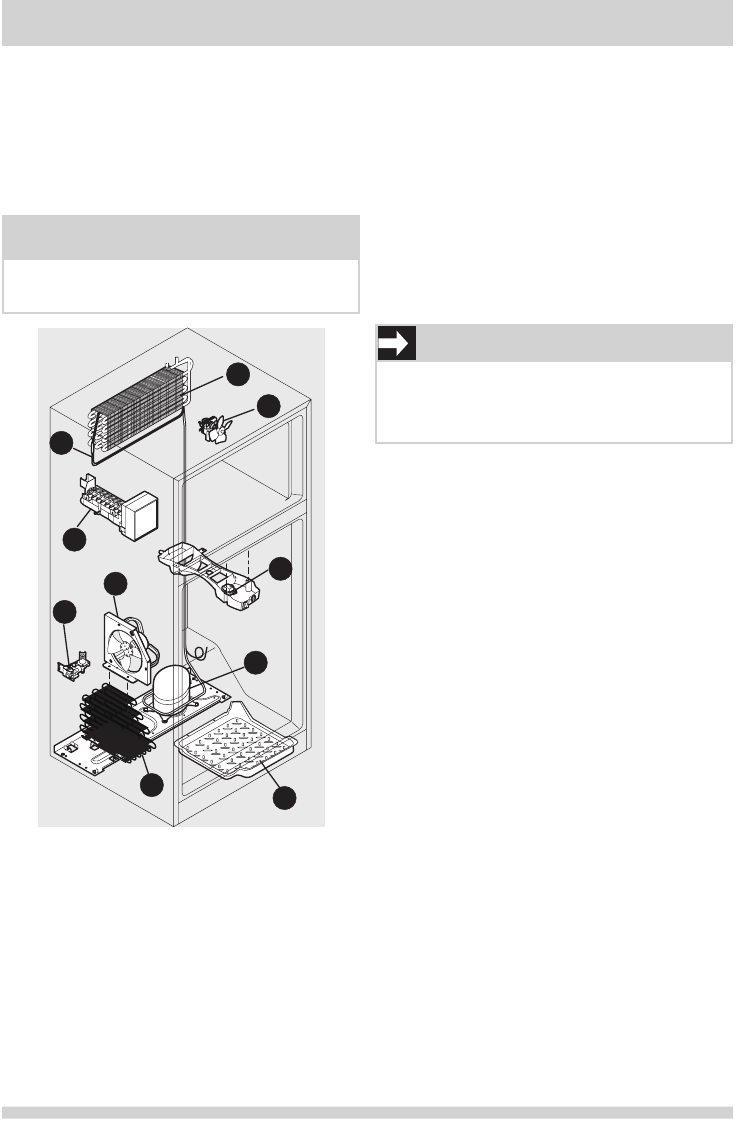
11
NOTE
Rigidfoaminsulationisveryenergyefcient,
but is not a sound insulator.
Understanding the sounds you may
hear
Yournew,high-efciencyrefrigeratormayintroduce
unfamiliar sounds. These sounds normally indicate
your refrigerator is operating correctly. Some
surfacesonoors,walls,andkitchencabinetsmay
make these sounds more noticeable.
IMPORTANT
During the automatic defrost cycle, you may
notice a red glow in the vents on the back wall
of your freezer compartment. This is normal
during the defrost cycle.
Following is a list of major components in your
refrigerator and the sounds they can cause:
A Evaporator Refrigerant through the
evaporator may create a boiling or gurgling
sound.
B Evaporator fan You may hear air being
forced through the refrigerator by the
evaporator fan.
C Defrost heater During defrost cycles, water
dripping onto the defrost heater may cause a
hissing or sizzling sound. After defrosting, a
popping sound may occur.
D Automatic ice maker When ice has been
produced, you will hear ice cubes falling into
the ice bin. The ice maker will produce 2.5 to
3 pounds of ice every 24 hours depending on
usage conditions.
E Automatic defrost control These parts can
produce a snapping or clicking sound when
turning the cooling system on and off.
F Condenser fan You may hear air being
forced through the condenser.
G CompressorModern,high-efciency
compressors run much faster than in the
past. The compressor may have a high-
pitched hum or pulsating sound.
H Water valve Makes a buzzing sound each
timeitopenstolltheicemaker.
I Drain pan (not removable) You may hear
water dripping into the drain pan during the
defrost cycle.
J Condenser May create minimal sounds from
forced air.
A
B
C
D
E
F
G
H
I
J
NORMAL OPERATING SOUNDS AND SIGHTS

















